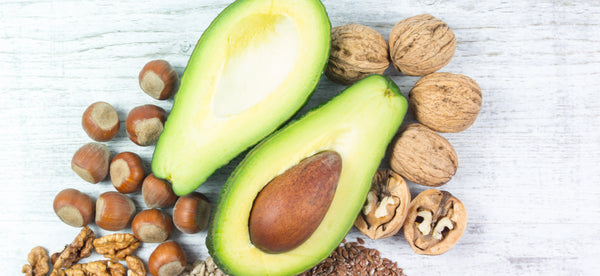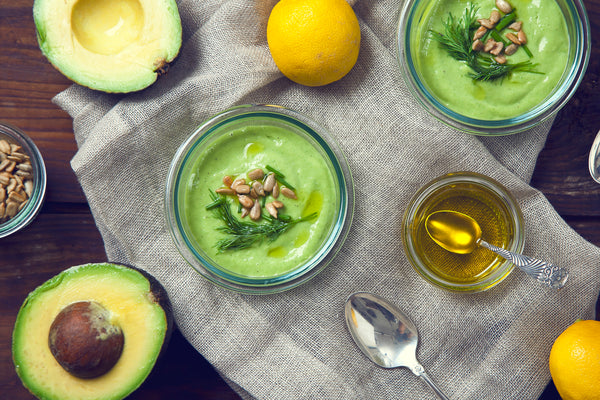


By Rachel Swanson, MS, RD, LDN
We are well-versed when it comes to reading the recipe directions to add a ‘dash of salt and pepper to taste’, but when was the last time the directions took into consideration the influence of bioavailability on the foods you're preparing? In this context, simply think of bioavailability as the nutritional effectiveness that can take place within our body. Selecting high quality, nutrient-dense produce is a main part of the equation, but there’s another side to the story that typically remains untapped and will open up an entirely new value-add component to your dishes.
The truths surrounding the debate between consuming raw versus cooked, or the best food prep methods cannot be boiled down to a simple black and white answer. Rather, these answers depend on the nutrient of interest: cooking degrades some bioactive compounds…while simultaneously enhancing others. This is important because it enables us to make elevated choices when it comes to enhancing the food that we eat. The more we can optimize the bioavailability factors of our food, the greater the probability they have to perform incredible services in our body; from scavenging for damaging free radicals, to influencing gene expression.
Time for a little food science and kitchen chemistry lesson, served up hot.
Going with local, organic options at a farmer’s market means purchasing produce options very close to their actual harvest date. This isn’t just for the freshness factor – it’s for preserving nutrient bioavailability. This loss of nutrients in any particular fruit or vegetable is referred to as the cellular respiration rate. In fact, research out of Berkeley showed that broccoli had undetectable levels of vitamin C simply after 7-days post-harvest!
Expert takeaway:
When we rush home after the local farmers market, we quickly jam all the produce in the fridge to prevent the dreaded nutrient degradation. For all intents and purposes, this is a great habit. However, there are multiple produce selections that simply do not maintain their peak flavor sitting in the fridge. After all – timing is everything, and we can achieve peak nutrition from our produce (vitamins, minerals, antioxidants) when we consume it at their peak ripeness.
Expert takeaway:
Generally, the most vulnerable nutrients that are most sensitive to heat degradation are the water-soluble vitamins (vitamins C and B, including folate). We observe the most nutrient losses when boiling, so consuming these choices raw, or those which are cooked at lower temperatures without water, is preferable.
Expert takeaway:
Just as some nutrients are destroyed in the cooking process, others are enhanced. Carotenoids fall into this category; these are the brilliant red, orange, and yellow pigments in fruits and vegetables. Carotenoids increase in bioavailability during food processing and cooking because it helps to release the compounds within the food’s matrix. This in turn, increases intestinal absorption. To put it in perspective, this is important because one of the carotenoids found in tomatoes, lycopene, has proven itself as a powerful antioxidant. In fact, it’s been studied for its role in cardiovascular disease, stroke and cancer, exhibiting a clear protective effect, especially for males. (So, make sure you’re serving them up to the important men in your life)!
Expert takeaway:
Just as a sommelier can pair the perfect wine to enhance your meal, you can do the same thing when it comes to the food combinations on your plate. Pair the produce rich in fat-soluble vitamins, (vitamins A, D, E, or K), like in sweet potatoes, carrots, squash, spinach, and other dark greens with some fat to optimize absorption. This could be as simple as serving up a lunch salad with a drizzle of olive oil, topped with a few avocado slices or a sprinkle of chopped nuts. Or, sautéing tomatoes in olive oil when making a pasta sauce to significantly increase the bioavailability of lycopene. Another notoriously easy pairing can enhance absorption of plant-based iron. Simply combine with vitamin C (e.g. a squeeze of fresh lemon, slices of oranges or strawberries) alongside iron-rich choices like kale, spinach, lentils and soybeans.
Expert takeaway:
Rachel Swanson is founder of Rachel’s Rx, a preventative medicine private practice and nutrition consultancy. She currently practices at Lifespan Medicine, a concierge medical practice utilizing top technologies, leading edge diagnostics and integrative, natural therapies to help others look, feel and live their best life possible. Prior to starting her company, she was selected twice for professional NFL cheerleading teams — Patriots and Chargers. During this time, she simultaneously led research efforts in sports performance recovery for Harvard Orthopedics, diet and oncology research for a Harvard physician-led foundation, and provided nutrition education and meal plans for professional NFL players. She recently established a community medical rotation for NYU students in Cape Town to assist those with HIV AIDs, diabetes and malnutrition. She is a trusted expert for the Dr. Oz Show, where she is frequently quoted for her advice pertaining to optimal health and nutrition. Rachel is a Licensed, Registered Dietitian Nutritionist, holds a Masters of Science in Clinical Nutrition from NYU, and completed clinical rotations at Mt. Sinai Hospital in Manhattan.
Comments will be reviewed prior to posting.
 NUTRITION
NUTRITION
 RECIPES: VEGAN OTHERS
RECIPES: VEGAN OTHERS
 NUTRITION
NUTRITION
Sign up today to receive weekly Beauty, Nutrition and Lifestyle tips, exclusive offers, and 10% off your first purchase.
Our beauty and wellness brand offers support, services and products to help you become WELL WITHIN your skin, mind and body.
Sign up today and receive your special Friends and Family 20% off your first purchase, valid until May 31, 2017.
Stay Ever Well,
Lynne + Renee
Co-founders
Thank you for signing up today to receive weekly Beauty, Nutrition and Lifestyle tips, exclusive offers and your special Friends and Family 20% off your first purchase, valid until May 31, 2017.
Stay Ever Well,
Lynne + Renee
Sign up today to receive weekly Beauty, Nutrition and Lifestyle tips, exclusive offers, and 10% off your first purchase.
fitnesshealthforever
May 22, 2019
Hey, very nice blog. I came across this on Google, and I am stoked that I did. I will definitely be coming back here more often. Wish I could add to the conversation and bring a bit more to the table, but am just taking in as much info as I can at the moment. Thanks for sharing.
Health Fitness Food